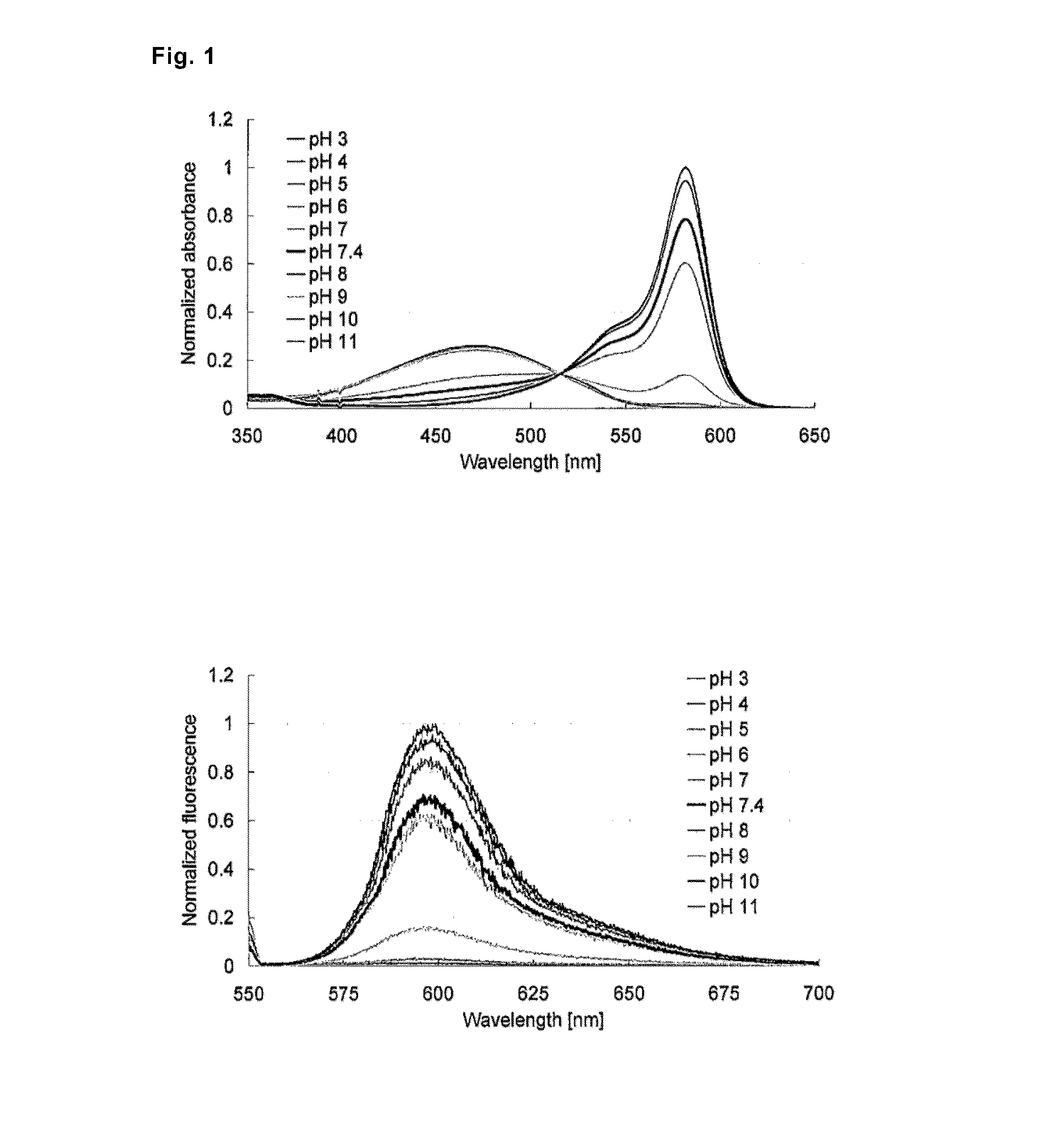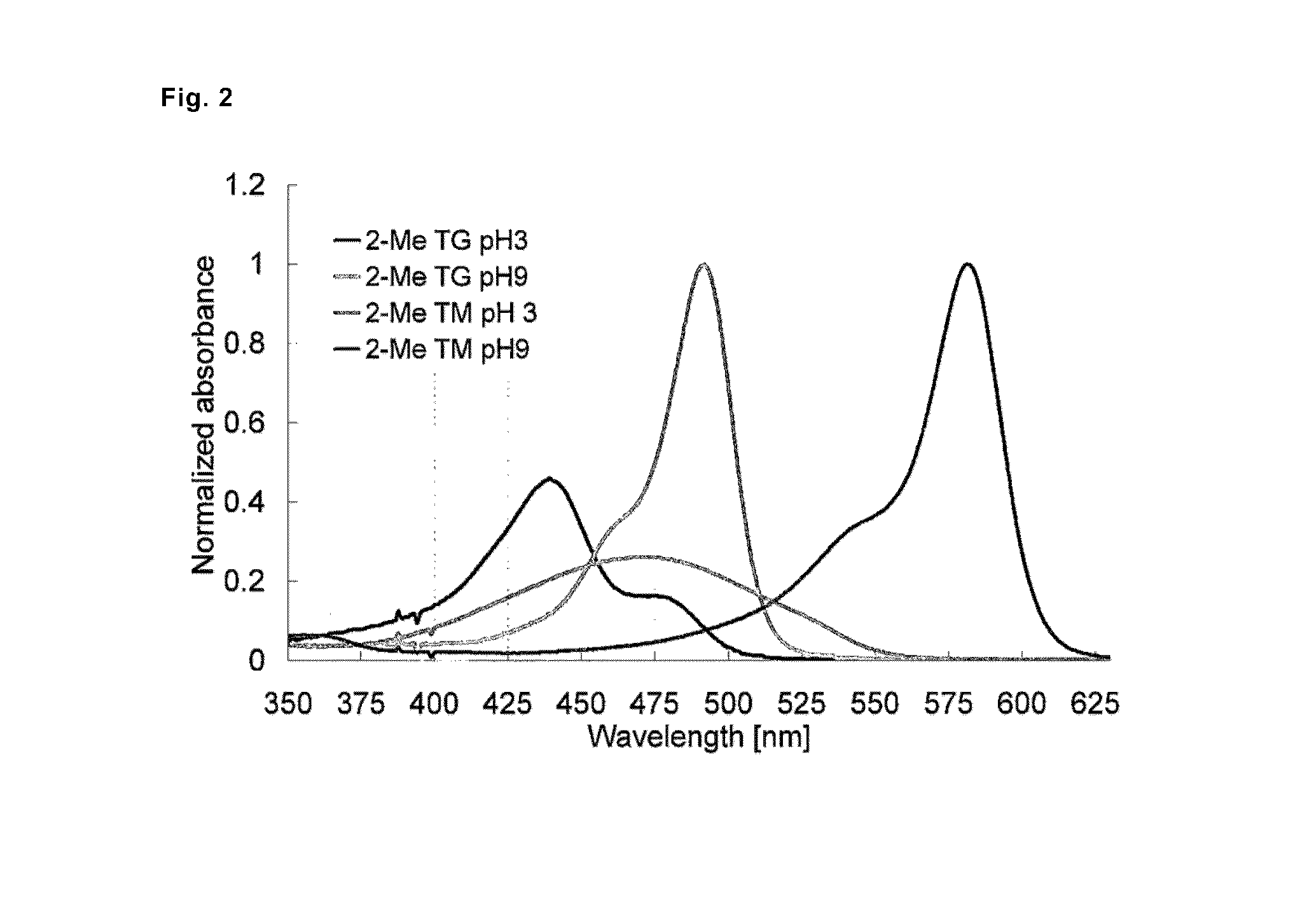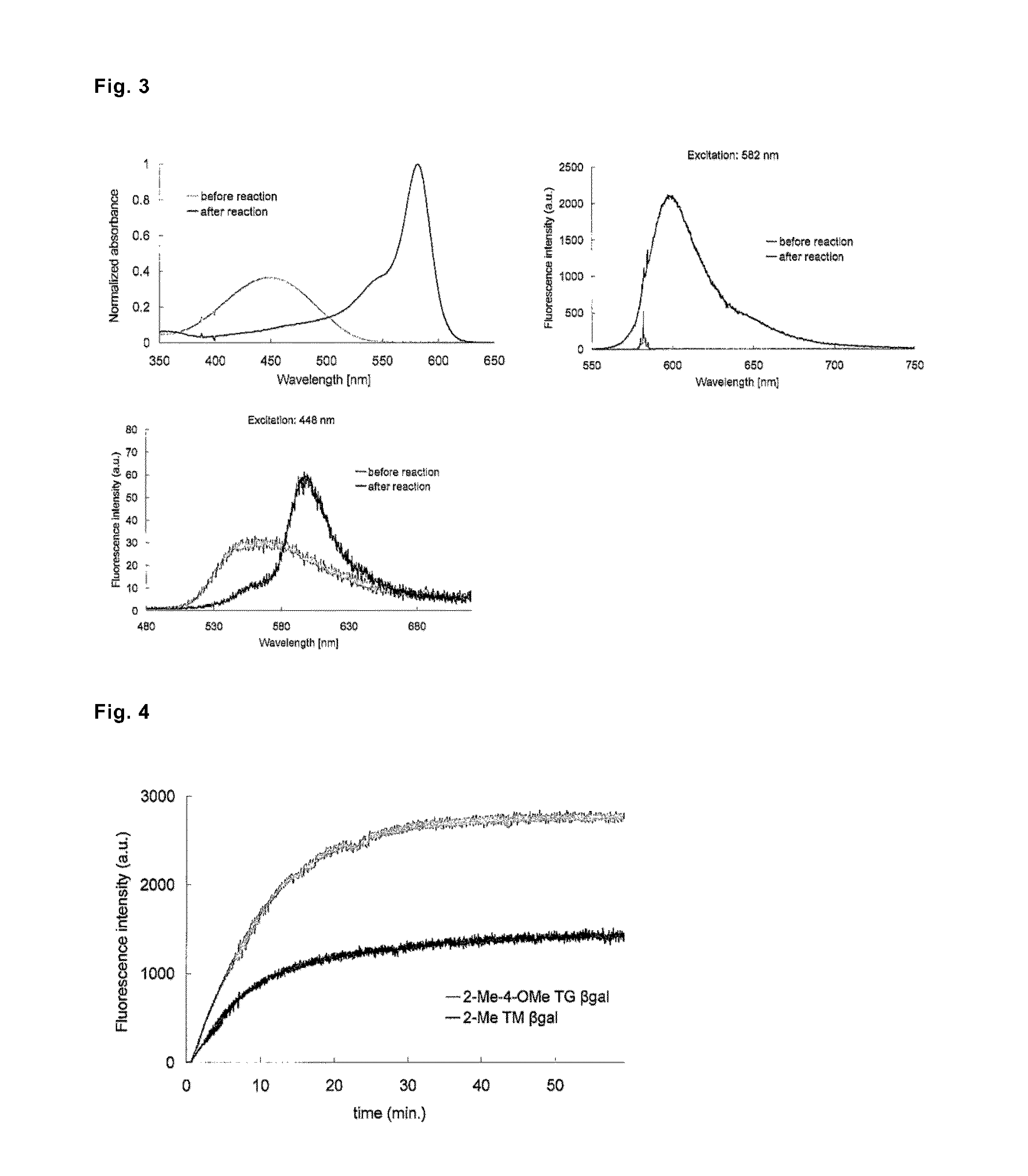Fluorescent probe
- Summary
- Abstract
- Description
- Claims
- Application Information
AI Technical Summary
Benefits of technology
Problems solved by technology
Method used
Image
Examples
example 1
[0069]The compound of the present invention was synthesized according to the following scheme.
(a) 3-Bromo-N,N-diallylaniline
[0070]K2CO3 (22.0 g, 159 mmol) was suspended in acetonitrile, the suspension was added with 3-bromoaniline (8.71 mL, 80.0 mmol) and allyl bromide (23.7 mL, 280 mmol), and the mixture was stirred at 80° C. for 14 hours. The reaction mixture was cooled to room temperature, then filtered through Celite, and sufficiently washed with ethyl acetate. The solvent was removed, and then the residue was purified by column chromatography (silica gel, ethyl acetate / hexane (1 / 40)) to obtain 3-bromo-N,N-diallylaniline (17.1 g, 67.9 mmol, yield 85%).
[0071]1H-NMR (300.40 MHz, CDCl3): δ 3.87-3.90 (m, 4H), 5.11-5.15 (m, 2H), 5.17-5.18 (m, 2H), 5.75-5.88 (m, 2H), 6.58 (dd, 1H, J=2.2, 8.1 Hz), 6.77-6.81 (m, 2H), 7.01 (t, 1H, J=8.1 Hz)
[0072]13C-NMR (75.45 MHz, CDCl3): δ 52.7, 110.8, 115.0, 116.3, 119.0, 123.3, 130.2, 133.2, 150.0
[0073]HRMS (ESI+). Found 252.0429, calculated 252.0388...
example 2
[0100]Absorption and fluorescence profiles of 2-Me TokyoMagenta obtained in the step (g) mentioned above were measured at various pH values. The results are shown in FIG. 1. It was confirmed that, with the shift of pH from the acidic side to the alkaline side, the maximal absorption wavelength shifted to the longer wavelength side from around 471 nm to around 582 nm (FIG. 1, upper graph), and that fluorescence emission with excitation light of 550 nm significantly increased (FIG. 1, lower graph). It is considered that 2-Me TokyoMagenta exists in an equilibrated state of the non-dissociated form (neutral form) and the dissociated form (anion form) mentioned below depending on pH. It was found that the fluorescence profiles of the compounds were significantly different from each other, for example, the absorption spectrum of the dissociated form shifts to the longer wavelength side compared with the non-dissociated form, absorption coefficients and fluorescence quantum yields of them ...
example 3
[0102]The characteristics of 2-Me TokyoMagenta βgal, which was designed as a fluorescent probe for β-galactosidase measurement, as an enzyme substrate and a fluorescent probe were evaluated. There are shown absorption spectra (FIG. 3, upper left graph) and fluorescence spectra (FIG. 3, upper right graph (excitation wavelength, 582 nm) and FIG. 3, lower left graph (excitation wavelength, 448 nm)) of 2-Me TokyoMagenta Bgal measured before and after a treatment with 6-galactosidase (6 units) in a 0.1M sodium phosphate buffer (pH 7.0) containing 0.1% dimethyl sulfoxide. The λmax values measured before and after the reaction were 448 nm (before the reaction), and 582 nm (after the reaction), respectively.
[0103]Advance of the hydrolysis reaction of 2-Me TokyoMagenta βgal by β-galactosidase was monitored by periodically measuring fluorescence intensity. As a control, 2-Me-4-OMe TokyoGreen βgal (9-(4′-methoxy-2′-methylphenyl)-6-(β-D-galactopyranosyloxy)-xanthen-3-one), which had been alread...
PUM
| Property | Measurement | Unit |
|---|---|---|
| Fluorescence | aaaaa | aaaaa |
Abstract
Description
Claims
Application Information
 Login to View More
Login to View More - R&D
- Intellectual Property
- Life Sciences
- Materials
- Tech Scout
- Unparalleled Data Quality
- Higher Quality Content
- 60% Fewer Hallucinations
Browse by: Latest US Patents, China's latest patents, Technical Efficacy Thesaurus, Application Domain, Technology Topic, Popular Technical Reports.
© 2025 PatSnap. All rights reserved.Legal|Privacy policy|Modern Slavery Act Transparency Statement|Sitemap|About US| Contact US: help@patsnap.com



